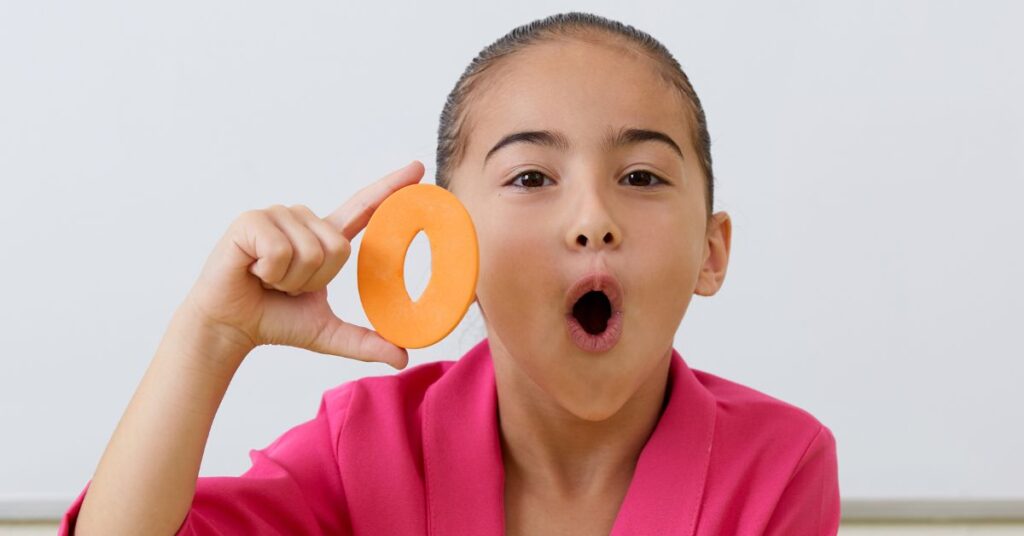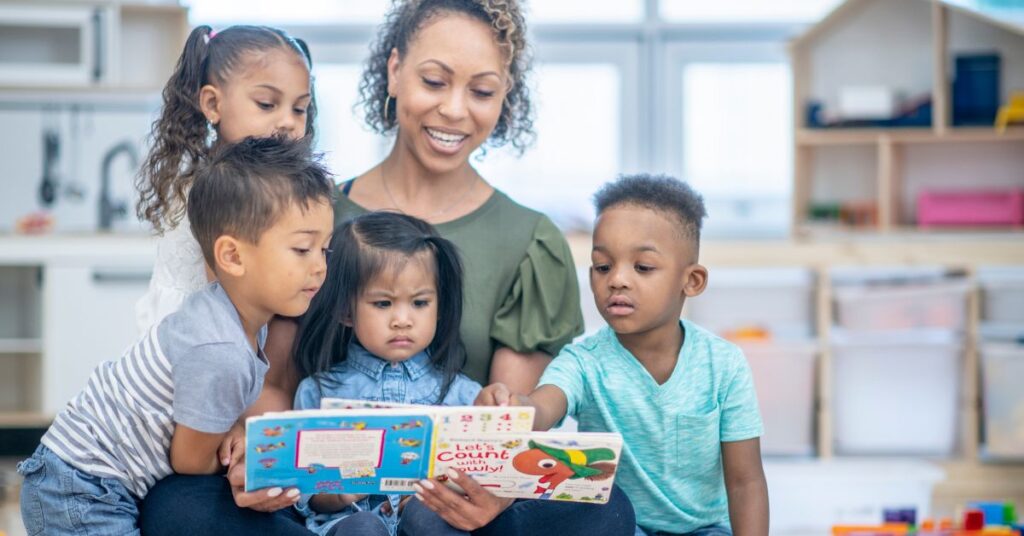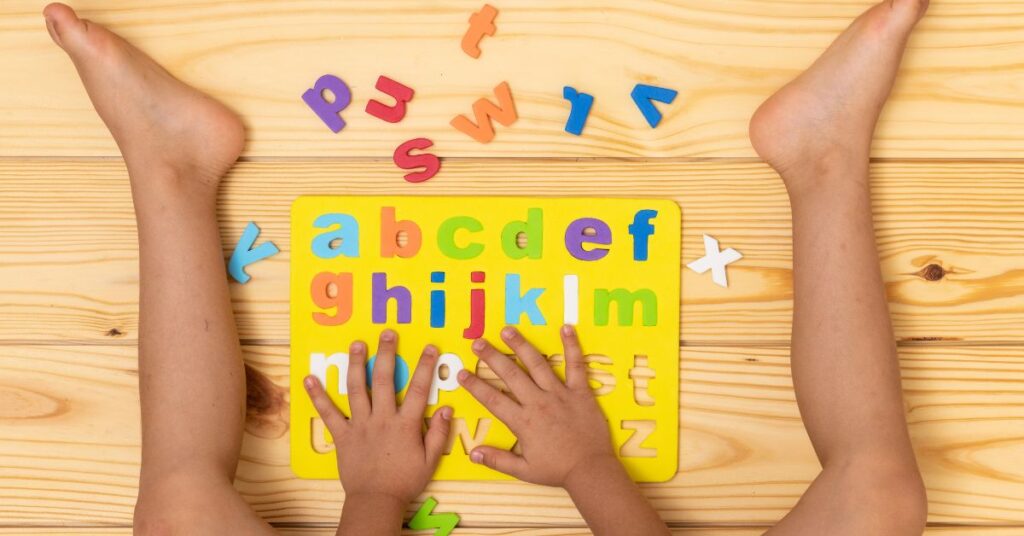Aa is for apple, Bb is for ball, Cc is for cat! That’s what you go through every day when teaching alphabet sounds to preschoolers.
As someone who has struggled with spelling, I know how important learning the alphabet and its sounds is for preschoolers. Without the proper foundation, kids will struggle to read and write, affecting their academic confidence.
If you’ve grown up in Kenya, you know how teachers decorate your work in red in when you have written the wrong spelling. While this should be an indictor that you need to work on your spelling, it’s often a source of shame and embarrassment for the kids.
With the right foundation, even the slowest learner can learn to read and spell. In today’s guide, we will look at the best way to teach alphabet sounds to preschoolers.
Start With Letter Sounds Without Naming the Letter
Letter sounds, also known as phonemes, are the sounds each letter makes. Not to be mistaken with the letter’s name, these sounds are what makeup words.
Developing phonemic awareness enables your little one to recognize and differentiate letters. This is how they can tell the difference between words where only the first letter is different, such as cat and bat.
So, where do you begin?
The first step is teaching the sound without naming the letter. While some letters have a similar sound to their name, most don’t. For example, the letter Q is called cue, or kew, but its sound is kwu.
Teaching the letter names and sounds simultaneously can be confusing, so start off with the sounds, then once they know it, you can teach the letter name.
#1 Formulate the Sequence of Letters to Teach
The next step is figuring out which letters to teach first. Simply teaching them alphabetically doesn’t guarantee your child will understand them. In fact, it may be more confusing because that’s not how letters tend to combine when creating words. Also, your preschooler will simply memorize the sounds, not understanding what they are.
You can teach letter sounds in any order, but here are a few good starting points.

1. Start With Your Child’s Name
Begin by teaching your child the sounds in their name, then move to other words, such as some of their favorite things, like their favorite food or toy. By starting with something that is familiar, you reduce any anxiety your child might be experiencing.
This familiarity bridges the gap between what they don’t know yet; thus, they become more comfortable while learning. Now that they can sound out their name or favorite toy, they will be more excited to learn other letters.
2. Letters That Occur More Frequently
Start with letters that occur more frequently in words first, such as ‘e, t, a, m, n, c, s, d, o.’ These frequent flyers provide the building blocks for numerous common words such as “the,” “cat,” “bed,” and “at.” By learning them first, children can quickly grasp the concept of letter-sound relationships, quickly grasping basic phonetic principles and building confidence.
3. Separate Letters With Similar Sounds
To prevent sound confusion, introduce pairs of letters with similar pronunciations separately. Examples include “b” and “p,” “d” and “t,” or “c” and “k.” Delay grouping these letters until each sound is grasped individually. This approach promotes accurate sound discrimination and minimizes potential reversals when blending sounds into words.
4. Teach One Letter at a Time
This singular approach ensures your child has enough time to learn each letter before moving to the next one. Make sure you recap what you have gone through so far. If you worked on 5 sounds this week, review them at the end of the week.

#2 Be Grandiose When Sounding Out Letters
When teaching your little one letter sounds, it’s crucial to enunciate the sound you want them to learn. Some letters have stretched-out sounds such as m, s, f, l, r, n, v, z. Others make clip sounds such as b, c, d, g, p, t, k, j. Use exaggerated facial and hand gestures to help create a stronger association of the sound in your child’s mind.
For example, when teaching the letter ‘o’, you can form an O with your mouth and exaggerate your pronunciation to help your kid understand what they need to do to produce the same sound.

#3 Read to Them
Reading helps build your kid’s cognitive functions, including recognizing patterns and sequences. For instance, as you read, you can sound out the letter you learned today in different words so your child can identify it in other words.
Read more slowly than you usually would while clearly enunciating the sounds you want your child to focus on. You can also point to the letter you are reading so they can follow along. Ask questions like what sound does a particular letter make? This will help you gauge their progress.

#4 Use Letter Flashcards
Flashcards are versatile and come in different shapes and colors. They are handy for younger kids as they tend to respond to learning through visual, tactile, or kinesthetic means. For example, you can have flashcards that simply show the letter or some that show the letter and a few words that start with that letter. Remember to teach one letter at a time and provide extra guidance for similar-sounding letters.
Grab a free alphabet flashcards pdf here. Print, laminate, and start learning.
#4 Play Letter Games
There are several alphabet games you can play with your little one as they learn their phonemes. Here are a few examples to get you started.
- Write different letters on some pieces of paper and ask your child to pick out the letter that matches the sound you are making.
- Sing songs showing your child how to pronounce certain letter sounds.
- Play letter bingo. Include items your child is familiar with, such as their favorite toy, food, their name, etc., and ask them to mark off any picture that starts with the letter you sound out.
- Using picture cards, let your child sort uppercase letters that match the picture. For example, if the picture on the card is an apple, they should match the letter A to it.
- Stick letters to building blocks and use them as aids in your lesson. For example, you can mix them up and ask your child to pick out the correct letter or sort them alphabetically as they sound out the letters.
- Play grab-a-sound. Take the letter blocks you made or write down some letters on a few pieces of paper, then place them in a bag. Have your child pick a letter block or piece of paper and sound out the letter they see. Once they can easily identify the sound, tell them to say a word with that sound.
We’ve prepared a letter sound activities bundle if you want to plug and play. Check it out.

#5 Use Multisensory Activities to Enhance Play Learning
Multisensory experiences involve engaging more than one sense at a time. When your child can see a letter, hear it, touch it and say it, they are more likely to remember it. Using multisensory activities makes learning fun and more memorable. Studies show it can improve your child’s early letter recognition. For example, you can fill a tray with sand or salt and draw letters as you sound them out. Similarly, you could use playdough to make the letter you’re learning to sound out.
#6 Teach and Repeat
Lastly, for your child to become more familiar with letter sounds, it’s important to repeat what they have learned over and over again. When teaching alphabet sounds to preschoolers, consistently repeating the same letter sounds helps kids pick them up more quickly. For example, you can have a letter of the week and your child can point out words or things that begin with that letter.
Emphasizing repetition allows your child to focus on a singular letter and how it appears in different words. Be patient with your child. Some letters are easier to learn than others, so keep encouraging them even when they get them wrong.
What’s Next?
Recognizing and identifying phonemes is an essential precursor to developing proper literacy skills. Luckily, kids are like sponges and will soak up all the information you give them pretty quickly. Use games to make it fun and follow up as much as possible to ensure your preschooler has learned the sounds first, then the name.
The best age to start teaching letter sounds is around 3 to 4 years old. However, every kid is different, and some may show interest and readiness earlier or later. Keep an eye on your child’s developmental cues and introduce letter sounds when they seem receptive to learning.
These sounds should be taught separately so your child donest get confused. You can start with uppercase letters as they are more distinct, then gradually introduce the lowercase letters.
If your child knows the alphabet letter names but mixes up the sounds, try using activities such as flashcards or phonics games that connect the visual letter to the sound it makes. Hands-on activities like tracing letter shapes while saying the sound or picking out objects that start with the letter’s sound are fun multisensory ways to practice. The goal is to solidify the link between how the letter looks and the specific sound it represents.




